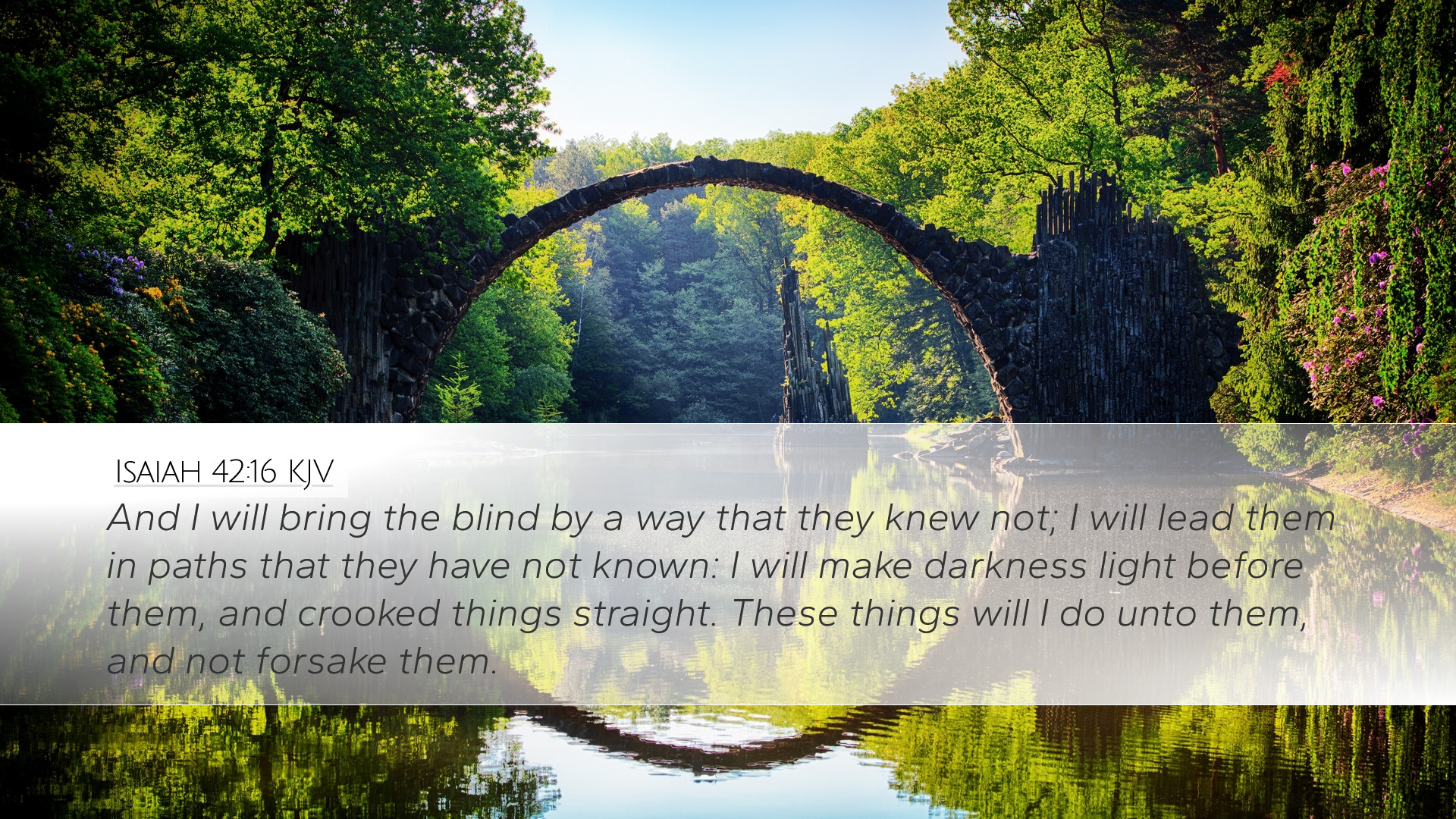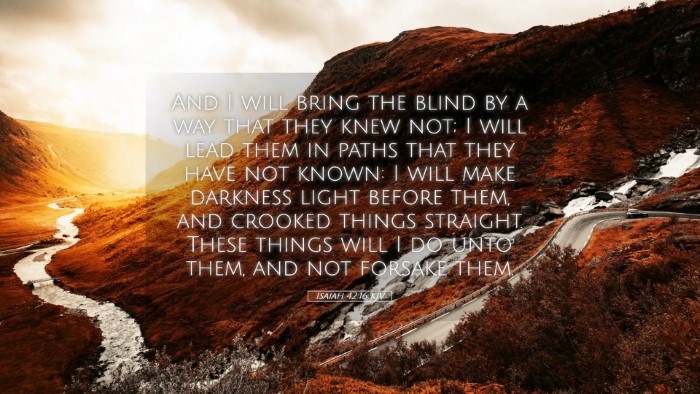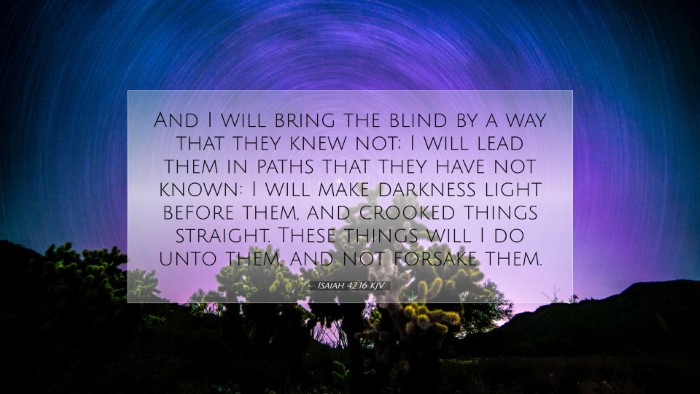Commentary on Isaiah 42:16
Isaiah 42:16 states: "And I will lead the blind by a way that they do not know, in paths that they have not known I will guide them. I will turn the darkness before them into light, the rough places into level ground. These are the things I do, and I do not forsake them."
Introduction
This verse is a profound proclamation of the restorative work of God, particularly concerning those who find themselves in spiritual darkness and blindness. The imagery of guidance, light, and the transformation of difficult paths serves to illustrate the mercy and sovereignty of God in leading His people through trials and tribulations.
Contextual Background
Isaiah is considered one of the major prophets, providing insights into the nature of God’s covenant with Israel. This chapter speaks to the hope of redemption and restoration, emphasizing God's commitment to His people. Commentators emphasize that in the face of Israel's failure and darkness, God reaffirms His role as a guide and protector. As Barnes notes, this chapter is a pivotal declaration that God will not abandon His people in their time of need.
Exegesis of the Verse
-
Leading the Blind:
Matthew Henry notes that to "lead the blind" symbolizes divine guidance offered to those who are spiritually unaware or incapable of finding their way. This can apply both to Israel as a nation and to individuals in need of spiritual enlightenment.
-
Paths Unknown:
Albert Barnes elaborates that the “paths that they have not known” denote the unfamiliar ways God leads His people, often requiring faith to walk into the unknown. God's ways are higher than human ways, and His path may not always be discernible.
-
Turning Darkness into Light:
In biblical literature, darkness often represents sin, confusion, and despair. Adam Clarke points out that God's promise to turn darkness into light signifies the transformative power of divine intervention, wherein God's presence dispels confusion and despair, illuminating the path ahead.
-
Leveling the Rough Places:
The reference to making "rough places level" suggests God’s ability to remove obstacles and challenges in the lives of His people. This speaks to the promise of divine assistance in overcoming difficulties, which is echoed in various texts throughout the Bible.
Theological Implications
This verse encapsulates key theological themes such as grace, guidance, and the divine nature of God as shepherd and healer. It portrays God’s willingness to engage with humanity, providing assistance and hope in circumstances that seem hopeless. Matthew Henry emphasizes that it’s not merely the act of guiding that is important, but the readiness of the Shepherd to lead His sheep.
Practical Applications
For pastors and theologians, this verse serves as a reminder of the importance of providing guidance to those in spiritual blindness. It emphasizes the responsibility to lead the congregation toward understanding and encountering God’s light, especially in a world filled with uncertainty and darkness.
For students and scholars, the verse invites ongoing exploration of how God’s revelation brings clarity and direction in life’s journey. It provokes questions concerning the nature of faith and the ways in which believers can expect to experience God’s guiding presence.
Conclusion
Isaiah 42:16 is an assurance of God’s commitment to guide His people through spiritual blindness into enlightenment. By invoking the imagery of light and smooth paths, this verse uplifts and encourages believers to trust in God’s providence.
In the reflective words of Adam Clarke, it is a banner of hope for all who are lost, declaring that God does not forsake His creation. As we embrace this divine promise, we are challenged to share the light we have received and assist others in navigating their own paths of faith.


